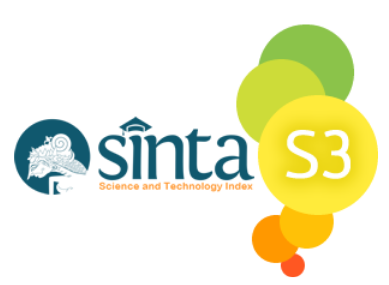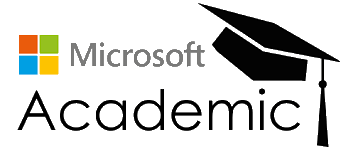ATTITUDES OF UNIVERSITY FACULTY TOWARD INCLUSION OF STUDENTS WITH SPECIAL EDUCATION NEEDS
Abstract
Inclusive education is an educational approach that has become a worldwide phenomenon. Accordingly, most of the studies conducted on teachers’ attitudes toward inclusive education are quantitative in nature. Hence, this study explored the attitudes of university faculty toward the inclusion of students with special needs. This qualitative study employed the phenomenological research design. The participants in the study who were identified through purposive sampling involved fourteen (14) university faculty. The inclusion criteria for the key informants considered those faculty without formal education and training background in special education but with experience in teaching college students with special needs. The data gathering was done through a semi-structured interview that lasted for an hour or more. This method of data-collection allowed the researchers to ask follow-up questions to saturate the information from the participants. The interview questions were guided through an aid memoire that was developed based on an a priori code. Audio recordings and field notes were used to help the researchers in the transcription of the data. A member check was conducted with the key informants after the transcription of their interviews to observe the correctness and novelty of the collected data. Through the cool and warm analyses of the data, three themes emerged, namely: a) being egalitarian, b) being sensitive, and c) being accountable. The themes that emerged from the analyses of the gathered data show that the university faculty have positive attitudes toward students with special needs.
Keywords
Full Text:
PDFReferences
Agbenyega, J. (2007). Examining Teachers’ Concerns and Attitudes to Inclusive Education in Ghana. International Journals of Whole schooling; 3 (1), 41-56.
Al-Zyoudi, M. (2006). Teacher’ attitudes toward inclusive education in Jordanian Schools. International Journal of Special Education, 21, 55-62.
Avramidis, E., & Norwich, B. (2002). Teachers' attitudes towards integration / inclusion: A review of the literature. European Journal of Special Needs Education, 17(2), 129-147.
Baker, K.Q., Boland, K., & Nowik, C.M. (2012). A campus survey of faculty and student perceptions of persons with disabilities. Journal of Postsecondary Education and Disability, 25 (4) 309-329.
Beyene, G. & Tizazu, Y. (2010). Attitudes of Teachers towards inclusive education in Ethiopia. Ethiopia Journal Education and Science, 6 (1).
Burke, K. & Sutherland, C. (2004.) Attitudes toward inclusion: Knowledge vs. experience. Education, 125(2), 163-172.
Carter, E.W. & Hughes, C. (2006). Including high school students with severe disabilities in general education classes: Perspectives of general and special educators, paraprofessionals, and administrators. Research and Practice for Persons with Severe Disabilities, 31, 174-185.
Copeland, S.R., Hughes, C., & Fowler, S.E. (2004). Increasing access to general education: Perspectives of participants in a high school peer support program. Remedial and Special Education, 25, 342-352.
Cushing, L.S. & Kennedy, C.H. (1997.) Academic effects of providing peer support in general education classrooms on students without disabilities. Journal of Applied Behavioral Analysis, 30(1), 139-151.
Eleweke, C.J. & Rodda, M. (2002). The challenge of enhancing inclusive education in developing countries. International Journal of Inclusive Education, 6 (2), 113-126.
Elik, N., Wiener, J. & Corkum, P.V. (2010). Pre-service teachers’ open-minded thinking dispositions, readiness to learn, and attitudes about learning and behavioral difficulties in students. Europian Journal of Teacher Education, 33, 127-146.
Fichten, C.S., Amsel, R., Bourdon, C.V. & Creti, L. (1988).
Interaction between college students with a physical disability and their professors. Journal of Applied Rehabilitation Counseling, 19, 13-21.
Fisher, M. & Meyer, L. (2002). Development and social competence after two years for students enrolled in inclusive and self-contained educational programs. Research and Practice for Persons with Severe Disabilities, 27, 16S-174.
Fisher, D., Sax, C., & Grove, K.A. (2000). The resilience of changes promoting inclusiveness in an urban elementary school. The Elementary School Journal, 100, 213-227.
Gumus, N. & Capar, T. (2011). The attitude of students in geography teacher departments towards teaching profession. International Online Journal of Educational Sciences, 3(1): 395-410.
Hammond, H. & Ingalls, L. (2003). Teachers’ attitudes toward inclusion: Survey results from elementary school teachers in three southwestern rural school districts. Rural Special Education Quarterly, 22(2): 24-30.
Kalyva, E., Gojkovi, D., & Tsakiris, V. (2007). Serbian teachers’ attitudes towards inclusion. International Journal of Special Education, 22 (3).
Konur, O. (2006). Teaching disabled students in higher education. Teaching in Higher Education, 11 (3): 351-363.
Leyser, Y., Greenberger, L., Sharoni, V., & Vogel, G. (2011).
Students with disabilities in teacher education: changes in faculty attitudes toward accommodations over ten years. International Journal of Special Education, 26 (1).
Loreman, T. (2007). Seven pillars of support for inclusive education moving from “why?” to “how?”. International Journal of Whole Schooling, 3 (2).
Loreman, T., Forlin, C., & Sharma, U. (2007). An international comparison of Preservice Teacher attitude towards inclusive education. Disability Studies Quarterly.
Mamah, V., Deku, P. Darling, S.M., & Avoke, S.K. (2011). University teachers’ perception of inclusion of visually impaired in Ghanaian universities. International Journal of Special Education, 6 (1).
Marzo, M. & Pascua, J. (2012). Teachers’ attitudes toward inclusive education in Public Elementary Schools in the Northern Part of Nueva Vizcaya, Philippines. International Peer Reviewed Journal, 4.
Moberg, S. (2003). Education for all in the North and the South: Teachers’ attitudes towards inclusive education in Finland and Zambia. Education and Training in Developmental Disabilities, 38 (4).
Nelson, J.R., Dodd, J.M., & Smith, D.J. (1990). Faculty willingness to accommodate students with learning disabilities: A comparison among academic divisions. Journal of Learning Disabilities, 23, 185-189.
O’Rourke, J. & Houghton, S. (2009.) The Perceptions of Secondary Teachers and Students about the Implementation of an Inclusive Classroom Model for Students with Mild Disabilities. Australian Journal of Teacher Education, 34 (1).
Rae, H., Murray, G., & Mckenzie, K. (2010). Teachers’ attitudes to mainstream schooling. Learning Disability Practice, 13 (10).
Rana, N. (2012). Pupil teachers’ perceptions towards inclusive education. Indian Streams Research Journal, 2 (7).
Secer, Z. (2010). An analysis of the effects of in-service teacher training on Turkish preschool teachers’ attitudes towards inclusion. International Journal of Early Years Education, 18 (1) 43-53.
Shadreck, M. (2012). Bachelor of education in service teacher trainees’ perceptions and attitudes on inclusive education in Zimbabwe. Asian Social Science, 8 (13).
Sharma, U., Forlin, C., Loreman, T. & Earle, C. (2006). Pre-service teachers', concerns and sentiments about inclusive education: An international comparison of the novice pre-service teachers. International Journal of Special Education, 21(2), 80-9.
Sharma, U. & Moore, D.W., (2009). Attitudes and concerns of pre-service teachers regarding inclusion of students with disabilities into regular schools in Pune, India. Asia-Pacific Journal of Teacher Education, 37 (3), 319-331.
Stevens, B. & Everington, C. (2001). Inclusion: What are teachers doing to accommodate for special needs students in the classroom. Electronic Journal of Inclusive Education, 1 (4).
UNESCO (1994). Salamanca statement. Paris: UNESCO.
Van Reusen A.K., Shoho, A.R., & Barker, K.S. (2001). High school teacher attitudes towards inclusion. The High School Journal, 84(2): 7-17.
Zomorodian, K., Parva, M., Ahrari, I., Tavana, S., Hemyari, C., Pakshir, K., Jafari, P. & Sahraian, A. (2012). The effect of seating preferences of the medical students on educational achievement. Medical Education Online, 17:10448-http://dx.doi.org/10.3402/meo.v17i0.10448.
DOI: https://doi.org/10.5281/zenodo.8105178
Refbacks
- There are currently no refbacks.
Copyright (c) 2023 Erudio Journal of Educational Innovation

This work is licensed under a Creative Commons Attribution 4.0 International License.












